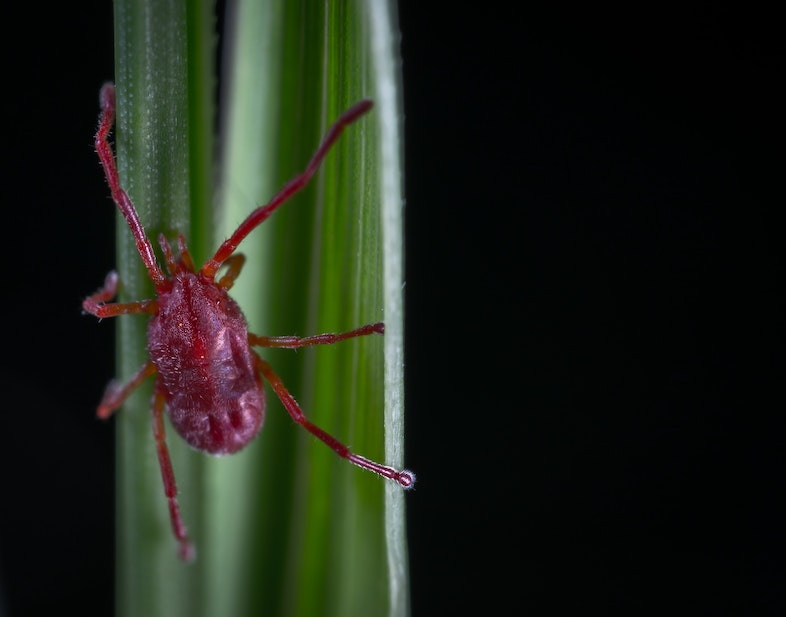Modified on: 20/09/2022
What these pathogenic organisms do to hemp and how to eliminate them
The fact that hemp has enemies is nothing new; this multi-purpose plant has been under constant attack for decades. Even though various studies have shown that it has many beneficial properties, it is constantly under fire. But in this article, we at Sensoryseeds will not discuss the enemies of cannabis belonging to mankind but rather those threatening its health and productivity.
Among the many pests that pose a danger to plants sprouted from marijuana seeds are micro mites, and in this article, you will find out how they attack cannabis and how they can be defeated.


Which mites are the enemies of cannabis and what damage they do to the plant
Like all plants, marijuana has many enemies that endanger its survival. Some of these, unfortunately, are so small that they are not visible to the naked eye and, despite their small size, can cause severe damage to the plant. For example, we usually hear about dust mites, but there are many species of this arachnid, some of which affect plants and fruit.
Unlike dust mites, cannabis micro mites are much smaller and almost always go by the following names:
- Tetranychus urticae (also known as the red spider mite);
- Steneotarsonemus Pallidus;
- Phytonemus Pallidus.
These tiny pests do not live long but proliferate quickly because the females can lay up to 70 eggs. Where do they do this? Mainly in the wettest parts of the plant, i.e. the shoots and new leaves. The damage they cause to plants is extensive as they feed on their nutrients and liquids and release toxins through their saliva that can make them sick.
You may be wondering: “But if they are so small, how can you tell if an infestation is going on?”
Well, the signs show up on the plant quite clearly. So let’s see what they are.
Read also: S1, F1 and F2 seeds: characteristics and differences between these types
How you can tell if a hemp plant is infested with red spider mite or other mites
Specific symptoms of plant distress are often attributed to their genetic characteristics. Well, undoubtedly, some plants are more resistant than others. Still, when one notices sure signs during the vegetative cycle (i.e. the time between the germination of the cannabis seeds and the birth of the inflorescences) and the flowering process, the poor plants are likely under attack by mites.
The typical signs of an infestation of these pests in the vegetative cycle are easy to spot. Leaves become deformed, the plant stops growing or grows much more slowly, the leaves’ colouring turns yellow or brown, shoots struggle to emerge, and the leaves start to fall down. If mites swoop down on the hemp during flowering, on the other hand, the plant suddenly stops growing, and there is a noticeable decrease in trichomes and flower pistils (the latter also tend to oxidise by turning brown).
In such cases, how do you get rid of the problem?


What to use as a pesticide for cannabis micro-mites
Mite contamination can occur even in seemingly protected environments such as greenhouses; these pests can be carried by insects and by the man himself, who may unintentionally introduce them into a plantation as they may be present under the soles of shoes or in clothes. The presence of other crops in the vicinity – especially vineyards, which are particularly prone to this type of infestation – is a further alarm bell that, in the presence of the signs mentioned in the previous paragraph, should convince a grower to equip himself with a good magnifying glass.
If the Sherlock Holmes-style check reveals an infestation, the wisest thing to do immediately is to remove the infested plants and the layer of soil in which they reside. After that, it is essential to disinfect the area and all tools with bleach to neutralise any eggs and larvae; otherwise, removing the shrubs attacked by the mites will not prevent the surviving pests from doing the same to other plants and increasing again.
Another way to get rid of cannabis mites is to use a natural insecticide such as pyrethrum, dockweed or garlic, or insects that feed on these micro mites. On the other hand, chemical products should be avoided if the plants are cultivated to produce derivatives for human or animal consumption.
Read also: The best pruning techniques for cannabis: what farmers do to increase yields
In conclusion
In this article, you have discovered how to detect mites on a cannabis plant and what is the best way to get rid of them. However, if you are a fan (or enthusiast) of this plant, you will know that its cultivation is not allowed for private citizens. Therefore, the best autoflowering seeds, fast flowering seeds and feminized seeds of different qualities of hemp that you will find for sale at Sensoryseeds can only be used for collecting purposes.
Do you want to add some missing pieces to your collection? Come and visit us!









